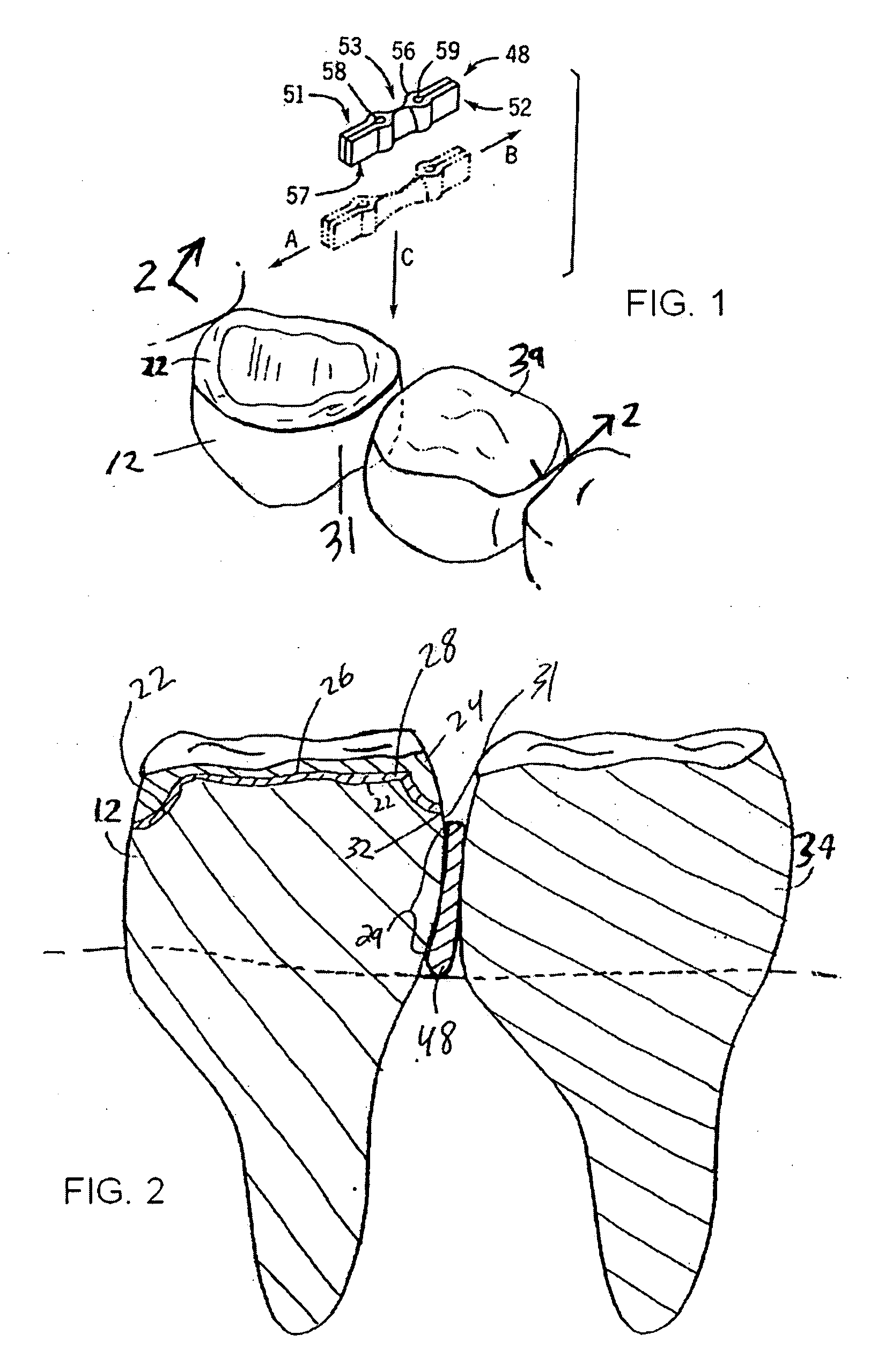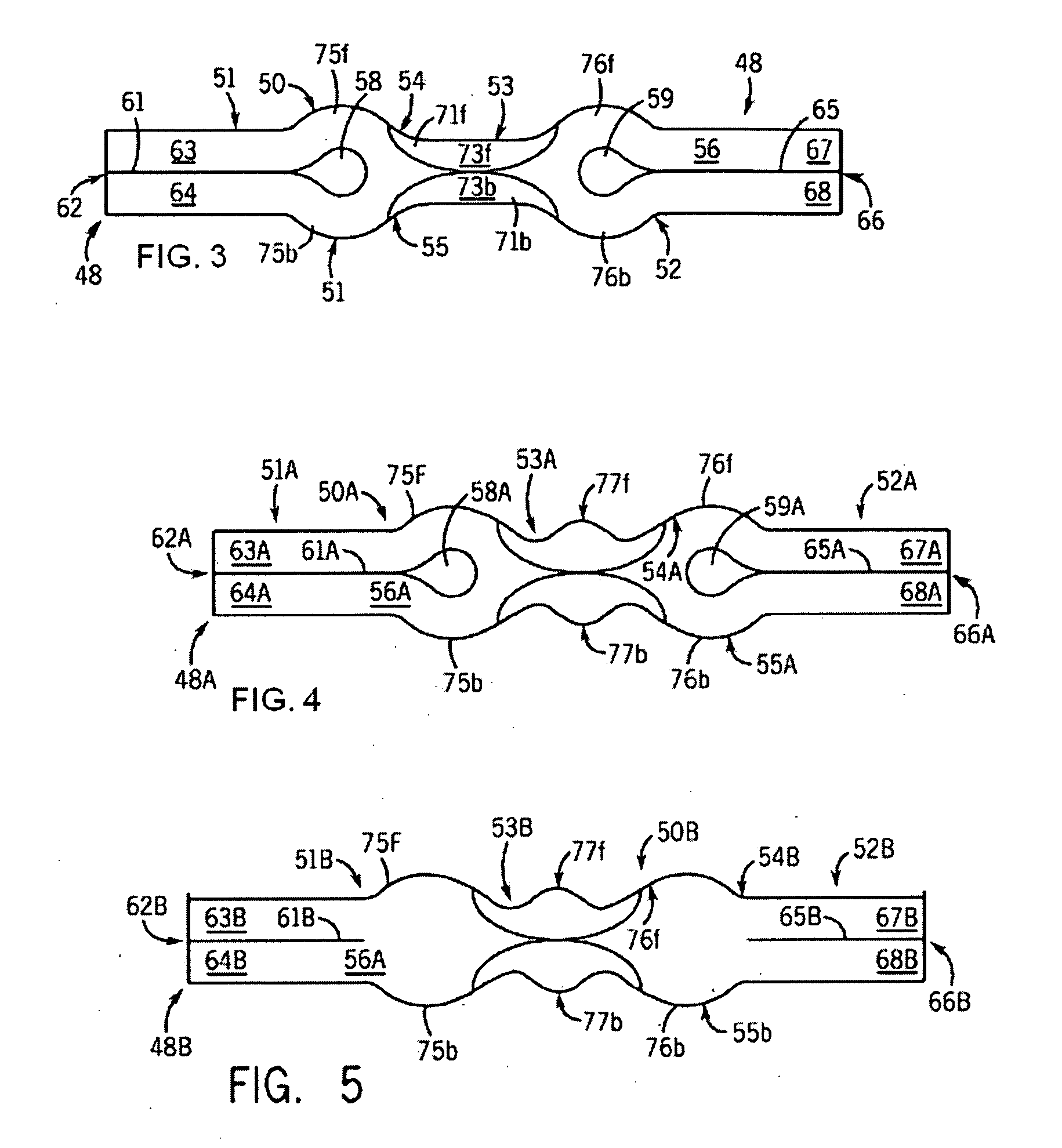Methods and Devices for Fixed Dental Restoration
a technology for fixed teeth and restorations, applied in the field of fixed teeth restorations, can solve the problems of difficult removal of hardened cement material on the interproximal surface of the tooth being restored, time-consuming and laborious, and insufficient effectiveness, and achieve the effects of improving the quality of life of the tooth, reducing the risk of tooth decay, and improving the quality of li
- Summary
- Abstract
- Description
- Claims
- Application Information
AI Technical Summary
Benefits of technology
Problems solved by technology
Method used
Image
Examples
Embodiment Construction
[0060]Turning to FIGS. 1-5T, there is shown various steps and devices in an example method according to the invention for restoring teeth using a fixed restoration such as a crown, onlay, inlay, veneer, or bridge. In a first step, the dentist locates a tooth 12 needing restoration. The dentist removes the decayed portion of the tooth 12 and leaves a mating surface 22 exposed. A material may be applied to the exposed mating surface 22 with the material bonding to the surface and serving as a fusible substrate for attachment of a fixed restoration thereto. Thereafter, the dentist makes a negative impression of the mating surface 22. The negative impression is used as a model to produce a positive impression of the previously prepared tooth needing restoration. Using this positive, the lab or the dentist fabricates a fixed restoration 24 having a mating surface 26 substantially conforming to the mating surface 22 of the tooth 12 requiring restoration (see FIG. 2). This fabrication of t...
PUM
 Login to View More
Login to View More Abstract
Description
Claims
Application Information
 Login to View More
Login to View More - R&D
- Intellectual Property
- Life Sciences
- Materials
- Tech Scout
- Unparalleled Data Quality
- Higher Quality Content
- 60% Fewer Hallucinations
Browse by: Latest US Patents, China's latest patents, Technical Efficacy Thesaurus, Application Domain, Technology Topic, Popular Technical Reports.
© 2025 PatSnap. All rights reserved.Legal|Privacy policy|Modern Slavery Act Transparency Statement|Sitemap|About US| Contact US: help@patsnap.com



